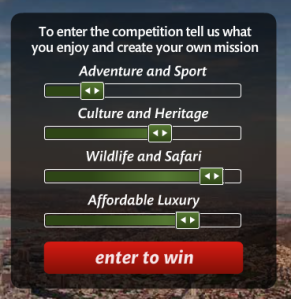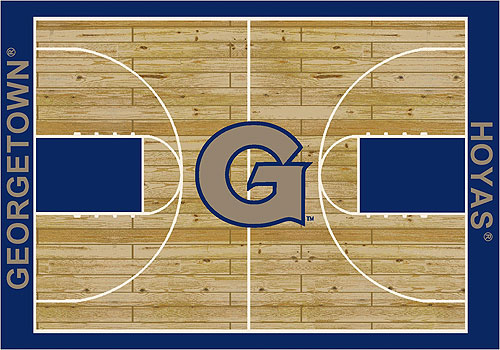 |
| Shoppers wait their turn outside of the Louis Vuitton store in Shanghai. |
The luxury retail market in China is huge, to say the very least. Behind Japan, China is set to become the second biggest consumer of luxury goods by 2015, and is eventually expected to overtake its neighbor. In 2009, the country accounted for 27% of global luxury sales, which is pretty astounding considering a luxury consumer market didn't even exist in China 15-20 years ago.
Goldman Sachs analyst, Jacques-Franck Dossin, says, “China is experiencing huge wealth creation, and there is lots of conspicuous consumption related to that. People want to show they are successful.”
Now that China is on a clear and unstoppable path to dominate high-end retail, luxury retailers are hurriedly flocking to China. But because it has typically been difficult to set up shop in China for many retailers, likely because of government restrictions and China’s hefty import tax (up to 40%), several luxury brands have taken to the Internet to breakthrough what is seemingly a difficult country to penetrate.
Louis Vuitton, the Pioneer
It wouldn’t be appropriate to talk about luxury retailers in China without mentioning Louis Vuitton. Louis Vuitton was the first foreign luxury brand in China, setting up shop in 1992, and has since blanketed the country with its products. Because of its early access to Chinese consumers, Louis Vuitton has been able to grow with the Chinese market, giving it an incredible advantage on the mainland. Opening the door to the Chinese luxury goods market, Louis Vuitton has undeniably designed the blueprint for brick and mortar stores that other luxury retailers have attempted to emulate in China.
Surprisingly, despite its colossal size and rapid growth, the Chinese market hasn’t been an easy target for Western brands because the initial investment in brand awareness, market research, and gaining approval to enter China is extremely high. Consequently, several luxury brands have decided to ride the digital wave into China with hopes of engaging with consumers in new and innovative ways.
The Digital Invasion
Kenneth Leung, Cisco retail marketing manager talks with Bertrand Pellegrin on the changing trends in the China luxury retailing market.
Key insights from the video: Chinese luxury consumers are in transition; they are constantly evolving and going online to learn about new brands faster than ever before. According to consultancy McKinsey & Co., 26% of China's female high-end shoppers checked out luxury brands' websites before making their purchases either offline or online.
Although luxury goods have been available on the web for several years in China, they have mostly been available through third-party retailers who offer an array of brands, rather than directly from the label. As a way to further and better introduce their brands, retailers such as Chloé, Dior, Armani and Burberry are making increasing use of online video and content to engage Chinese consumers.
"This is a strategic move that will open up luxury to the entire nation," said Federico Marchetti, founder and chief executive of Milan-based YOOX, which created a Chinese micro-site for the Giorgio Armani label.
With Chinese women increasingly heading online to search for, research and purchase luxury goods, luxury brands are making a beeline to grab a piece of the coveted online real estate in China.
The Digital Leaders

This past spring, Chloé, a popular French fashion label that currently has 13 stores in China, conducted a major runway show in Shanghai and streamed it live on a Chinese blog that the brand launched last December. This live show would actually become China's first digital fashion show, ever.
With music designed by Josef Fung, a renowned multimedia composer based in Beijing, and world-famous Chinese model Bonnie Chen being featured in the show, Chloé made sure to connect to the Chinese market with a dose of authenticity.
Earlier this year, Chloé boldly revealed that it expects China to become its largest market within the next two years, and is building an online store dedicated to Chinese consumers that will launch in 2013.
But Chloé isn't the only fashion label going digital in China; Burberry, a British-born luxury brand which currently has 57 stores in China, also announced that it would stream its fashion show live from Beijing. Burberry streamed the event on Fashionising, a fashion social network and community whose goal is to "stimulate your visual senses" through impressive high-definition images. Taking fashion and digital innovation to the next level, Burberry utilized virtual image technology, combining live models with animated footage and life-like holograms, to create a visually stunning show. And Burberry didn't stop there - they included a live performance from the popular British band Keane, making it the band's first show in China.
Burberry created a video to advertise the digital fashion show that would air live from Beijing.
Burberry also recently launched on four major Chinese social platforms: Kaixin001 and Douban (China's versions of Facebook), Youku (China's version of YouTube) and Weibo (China's version of Twitter), making it one of the leaders in the retail-social media realm in China.
Above all, these events reinforce how committed luxury brands are to the digital world in China and how committed they are to this rapidly emerging market.
Luxury and Innovation: the Future of Luxury Brands in China
 With a global luxury market worth an estimated $80 billion a year, online audiences are being increasingly targeted by luxury brands these days, especially in an emerging and booming market like China. There are huge growth opportunities for luxury brands similar to Chloé and Burberry in China as luxury purchasing power continues to grow and consumers continue to go online to purchase luxury products.
With a global luxury market worth an estimated $80 billion a year, online audiences are being increasingly targeted by luxury brands these days, especially in an emerging and booming market like China. There are huge growth opportunities for luxury brands similar to Chloé and Burberry in China as luxury purchasing power continues to grow and consumers continue to go online to purchase luxury products."We think we can create a place [in China] where the Internet will mean beauty and extravagance, not just discount," said Mr. Marchetti, of YOOX.
Now that Chinese consumers have fully embraced the Internet, more retailers can target the fastest-growing web population in the world and give them unprecedented access to their products. Additionally, by going online and utilizing digital tools, retailers can grow in cities where affluent or aspiring consumers may not have regular access to the stores.
As more luxury brands attempt to establish themselves in the Chinese market, there are a few major factors when considering the future of luxury in China:
- Over the past decade, there's been a 50% increase in the number of Chinese millionaires, with most of them under 40 years old, according to CLSA Asia-Pacific Markets.
- With an estimated 300,000 millionaires and rising, China is the world’s fourth richest country, which translates into purchasing power.
- China’s online population became the world’s largest as it soared to 485 million users as of the end of June 2011.
- An estimated 80% of online shoppers in China are less than 45 years old, according to Forrester Research.
- China has a population of 1.3 billion, long starved of global retail opportunities.
When I think about the Chinese consumer, two words come to mind: luxury and innovation. The Chloé and Burberry shows are merely the tip of the iceberg.
*Here are two really fascinating consumer market studies conducted by KPMG: Luxury Experiences in China and Luxury Brands in China.









